Trigonometry is a fundamental branch of mathematics that explores the relationship between angles and sides in triangles, especially right-angled triangles. For Class 10 students and aspirants preparing for competitive exams like JEE, NEET, and others, a solid understanding of trigonometry basics is crucial. It serves as a foundation for more advanced mathematical and scientific topics.
From the definition of sin, cos, and tan to their practical usage in calculating heights, distances, and navigation paths, trigonometry touches various real-world applications. This guide will walk you through the core ideas, identities, and real-life uses that make trigonometry so essential.
What is Trigonometry?
Trigonometry, derived from the Greek words “tri” meaning three, “gonia” meaning angle, and “metron” meaning measure, literally translates to “the measurement of triangles.”
It’s the branch of mathematics that deals with the study of angles, sides, and functions related to triangles, particularly right-angled triangles.
Start with an Introduction to Trigonometry
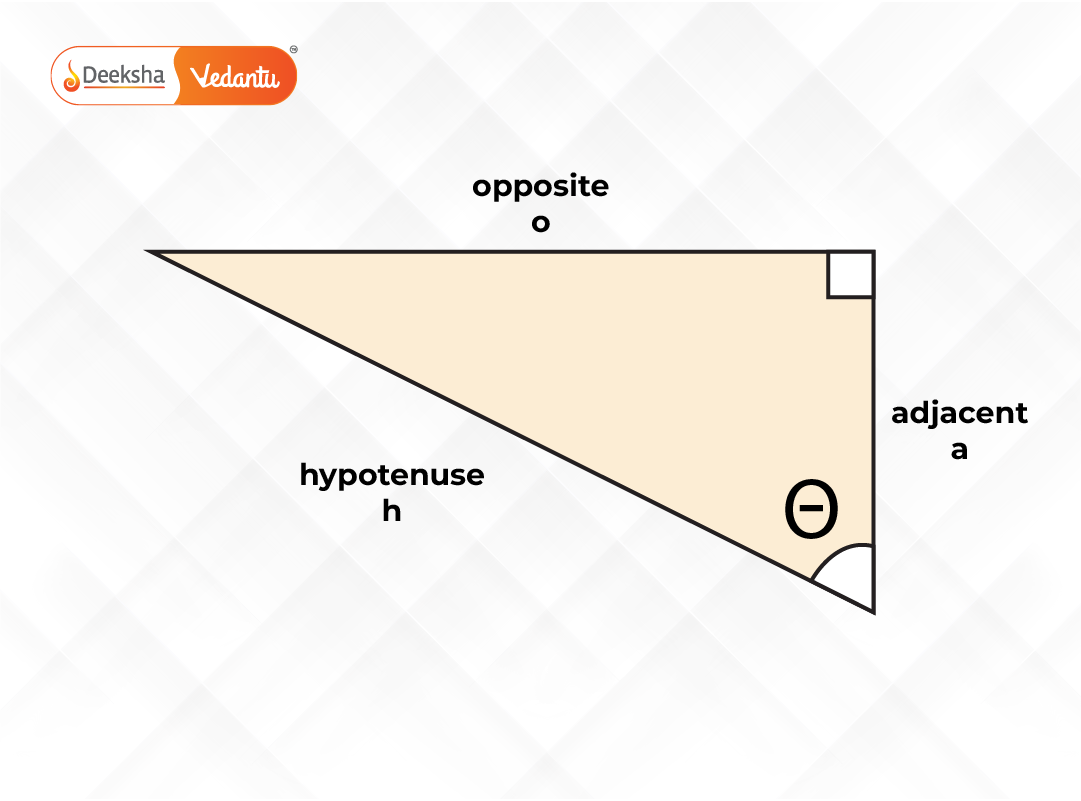
Trigonometry is widely applied in different fields including architecture, physics, astronomy, robotics, and even art. Once you understand how angles and sides correlate, you unlock the ability to measure and model real-world objects and scenarios.
Understanding the Right-Angled Triangle
Before diving into ratios and functions, it’s essential to familiarize yourself with the components of a right-angled triangle:
- Hypotenuse: The longest side of the triangle, always opposite the right angle.
- Opposite side: The side directly opposite the angle being considered.
- Adjacent side: The side next to the angle, excluding the hypotenuse.
These three sides are the building blocks for all trigonometric ratios. Without understanding this structure, it’s nearly impossible to apply trigonometric principles accurately.
Trigonometric Ratios Class 10
Trigonometric ratios are mathematical expressions that relate the sides of a right-angled triangle to its angles. In Class 10, students are introduced to six primary ratios.
Sin, Cos, and Tan Definitions
Here are the definitions of the three main trigonometric ratios:
- Sine (sin θ) = Opposite / Hypotenuse
- Cosine (cos θ) = Adjacent / Hypotenuse
- Tangent (tan θ) = Opposite / Adjacent
And their reciprocal functions:
- Cosecant (cosec θ) = 1/sin θ = Hypotenuse / Opposite
- Secant (sec θ) = 1/cos θ = Hypotenuse / Adjacent
- Cotangent (cot θ) = 1/tan θ = Adjacent / Opposite
Explore more on Trigonometric Ratios
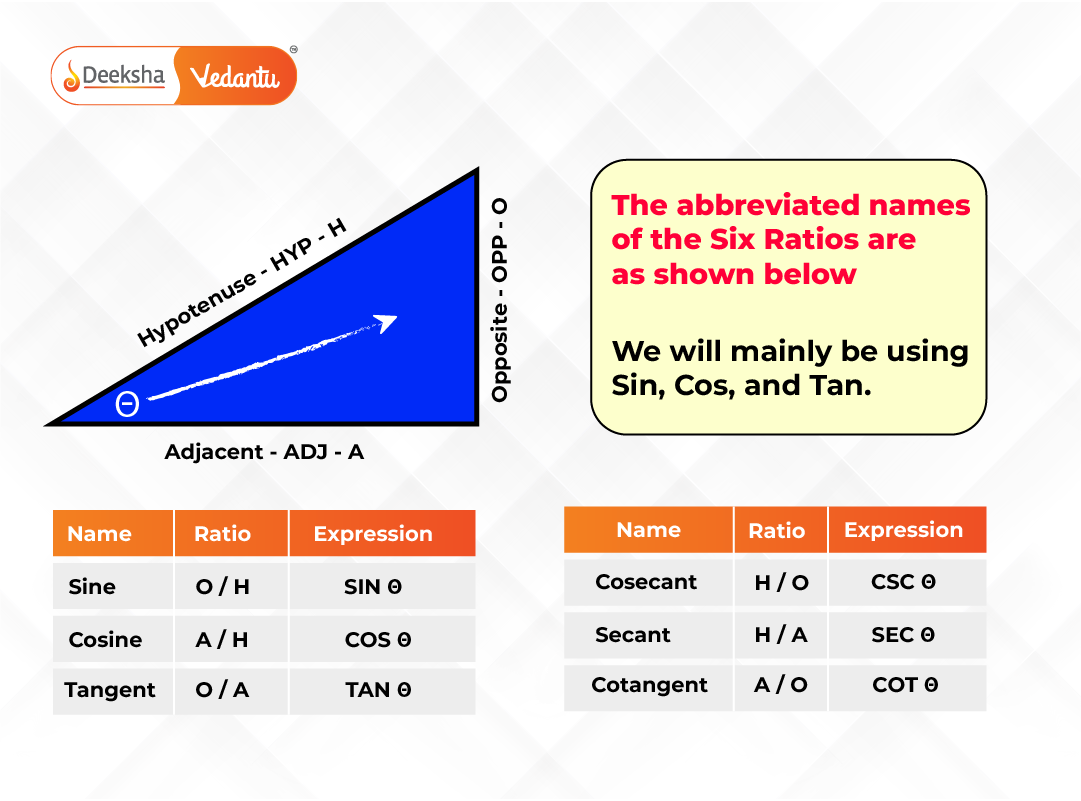
These ratios are fundamental not only for school-level problems but also for understanding more complex mathematical concepts later.
Trigonometric Ratios of Specific Angles
Certain angles – 0°, 30°, 45°, 60°, and 90° – have standard trigonometric values that are easy to remember and frequently tested in exams.
| Angle (θ) | sin θ | cos θ | tan θ |
| 0° | 0 | 1 | 0 |
| 30° | 1/2 | √3/2 | 1/√3 |
| 45° | √2/2 | √2/2 | 1 |
| 60° | √3/2 | 1/2 | √3 |
| 90° | 1 | 0 | Undefined |
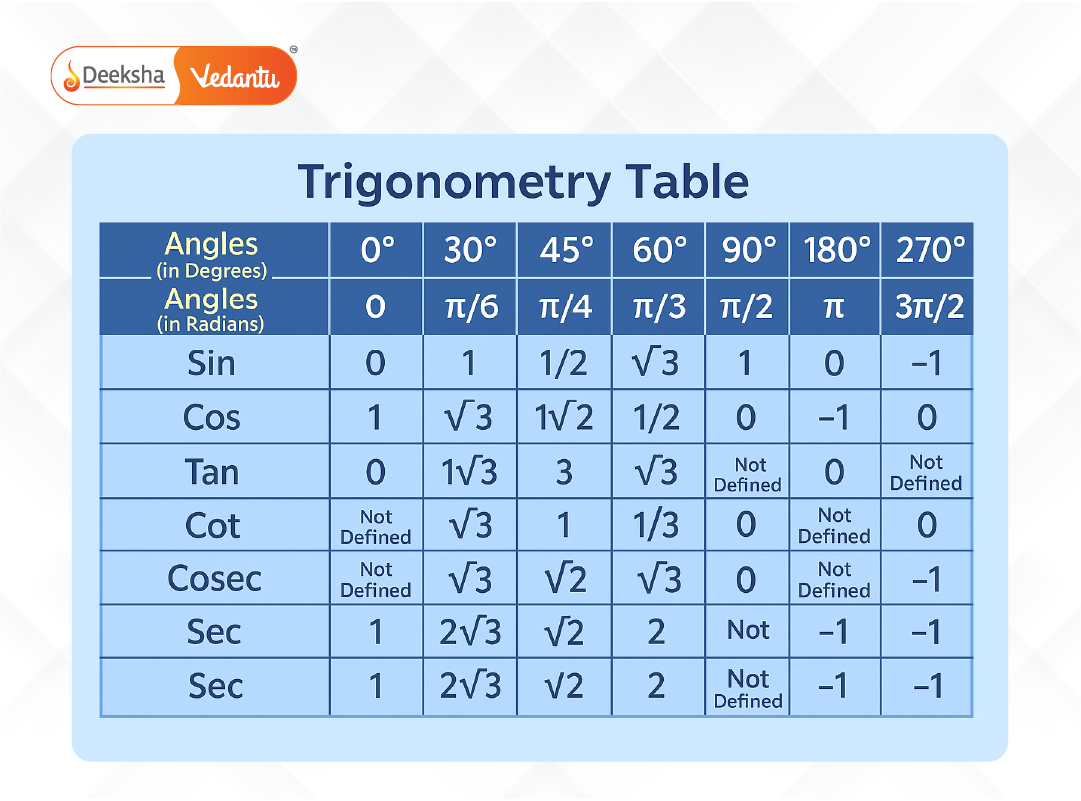
Students can use mnemonic phrases or hand tricks to recall these values quickly during tests.
Important Trigonometric Identities
Trigonometric identities are equations involving trigonometric ratios that are true for all values of the angle. These identities simplify equations and help in solving various trigonometric expressions.
Fundamental Identities
- Pythagorean Identity:
- Tangent-Secant Identity:
- Cotangent-Cosecant Identity:
Tips to Use Identities
- Simplify complex expressions in board exams
- Use them to prove equations
- Solve trigonometric equations in competitive exams
- Substitute values to check the validity of an equation
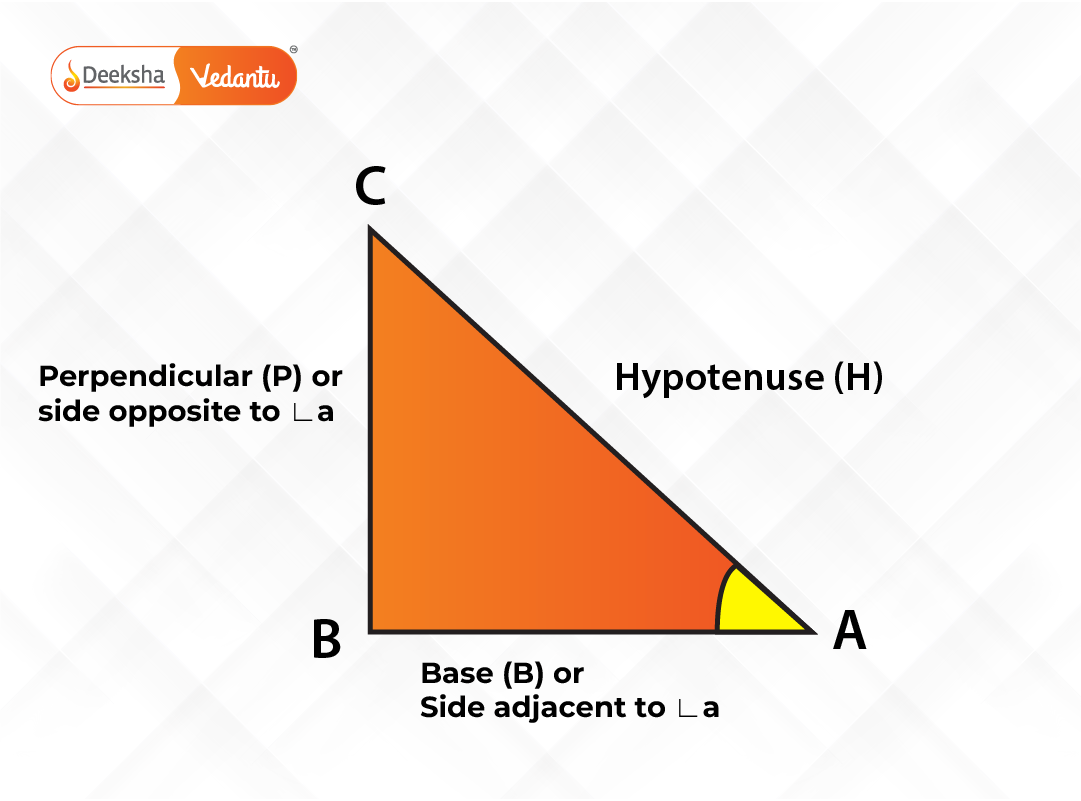
Mastery of these identities boosts speed and accuracy in math problems.
Some Applications of Trigonometry
Trigonometry has wide-ranging uses beyond the classroom. Its ability to calculate unknown distances and angles makes it invaluable.
Real Life Applications of Trigonometry
- Architecture & Construction: Used to calculate roof slopes, shadows, and load angles.
- Astronomy: Helps determine distances to celestial bodies using angular measurements.
- Navigation: Trigonometric triangulation helps in locating positions via GPS.
- Engineering: Used in designing structural elements, gears, and mechanical components.
- Game Development: Powers animations, movement tracking, and 3D modeling in modern video games.
- Medical Imaging: Used in CT scans and MRI for constructing 3D images from slice data.
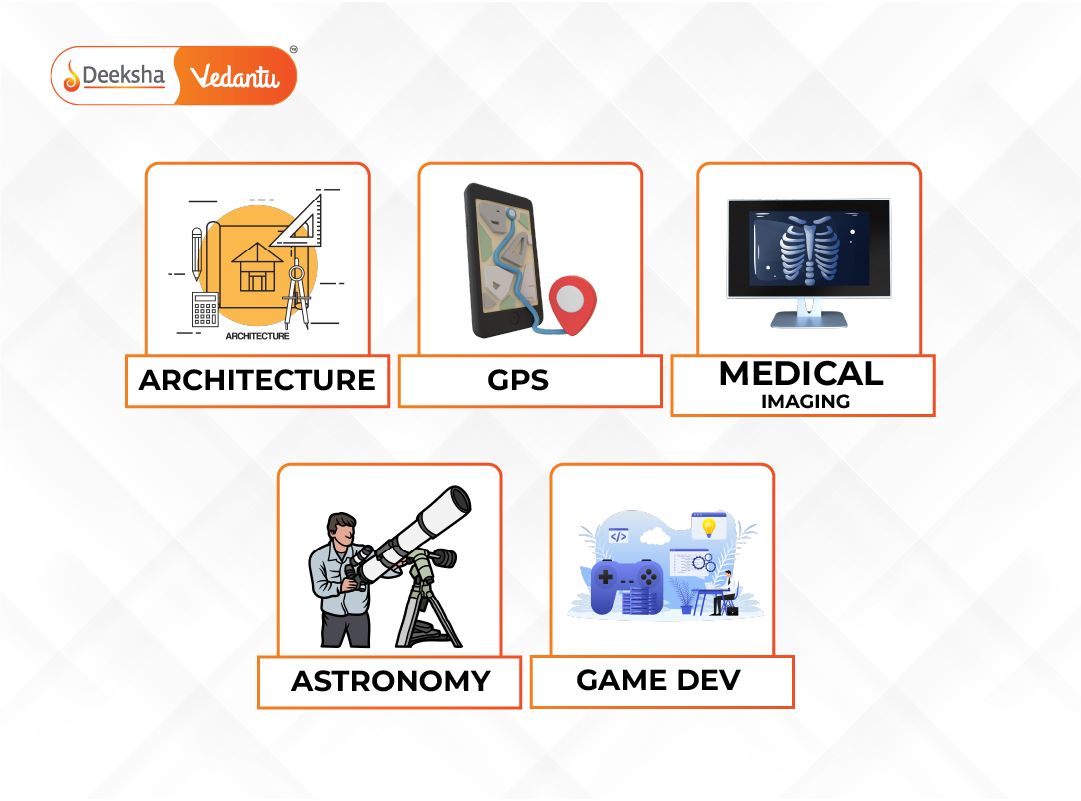
Understanding these applications shows why trigonometry remains a cornerstone of STEM education and careers.
FAQs About Trigonometry
1. What are the basic trigonometric ratios?
The primary trigonometric ratios are sine (sin), cosine (cos), and tangent (tan), used to relate the angles of a triangle to its sides.
2. Why are sin, cos, and tan important?
They form the basis for solving geometry and trigonometry problems and are essential in many real-world applications including physics and engineering.
3. How do I memorize trigonometric ratios for standard angles?
Use memory aids like triangles with fixed side ratios or acronyms like “SOH-CAH-TOA” to remember the definitions.
4. What are some real life applications of trigonometry?
From constructing bridges to designing computer games, trigonometry finds practical use in many industries.
5. Is trigonometry used beyond Class 10?
Absolutely. Trigonometry is an essential part of math in Class 11–12 and is heavily used in science, architecture, data analysis, and more.
Conclusion
Trigonometry forms a vital part of mathematics, helping students connect abstract theories with real-world applications. By mastering trigonometry basics, understanding sin cos tan definitions, internalizing standard angle values, and applying trigonometric identities, you prepare yourself for success in both academics and your future career.
Practice regularly, revise identities, and keep exploring the practical implications of this powerful mathematical tool. Whether it’s for exams or understanding the mechanics of the world, trigonometry will serve you well throughout your academic and professional journey.
Table of Contents






Get Social